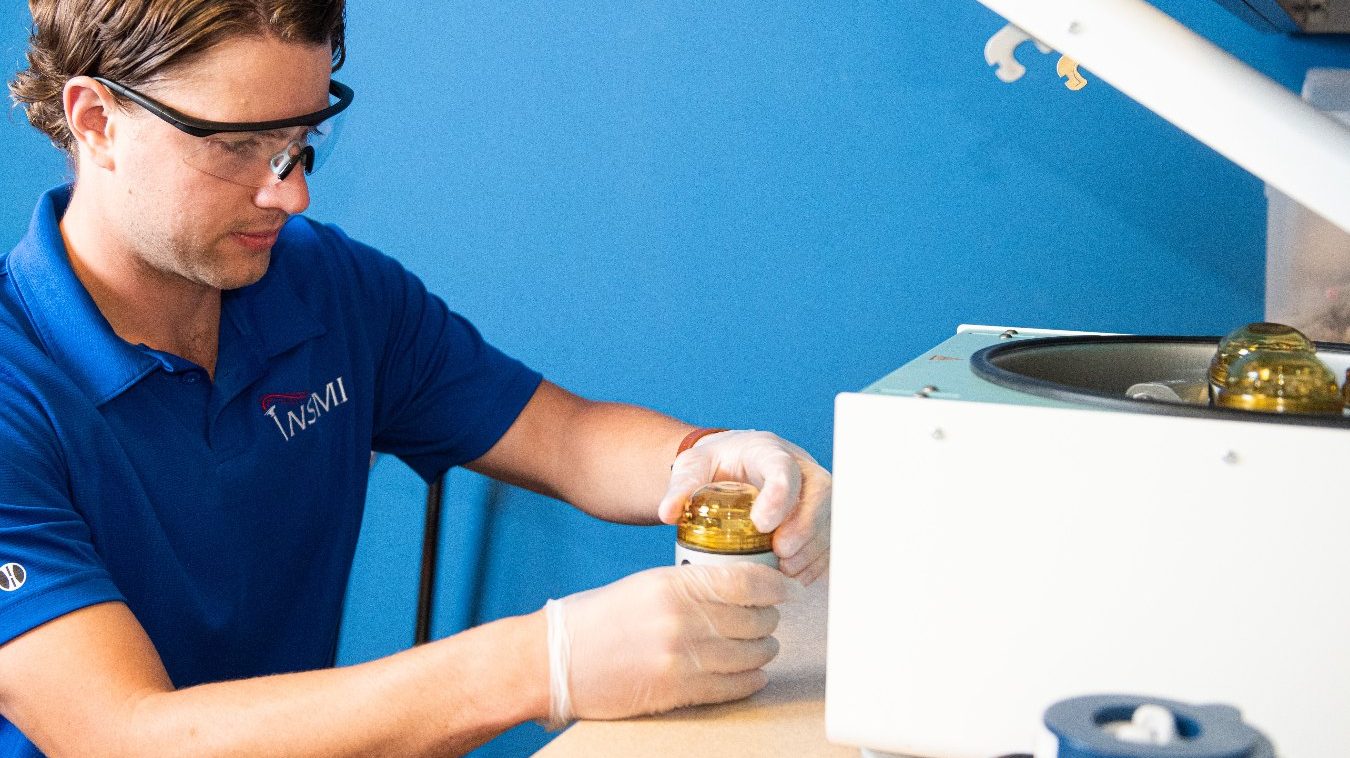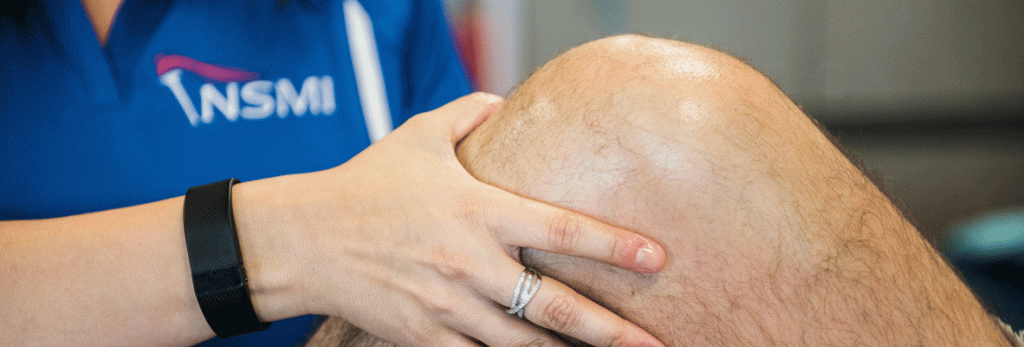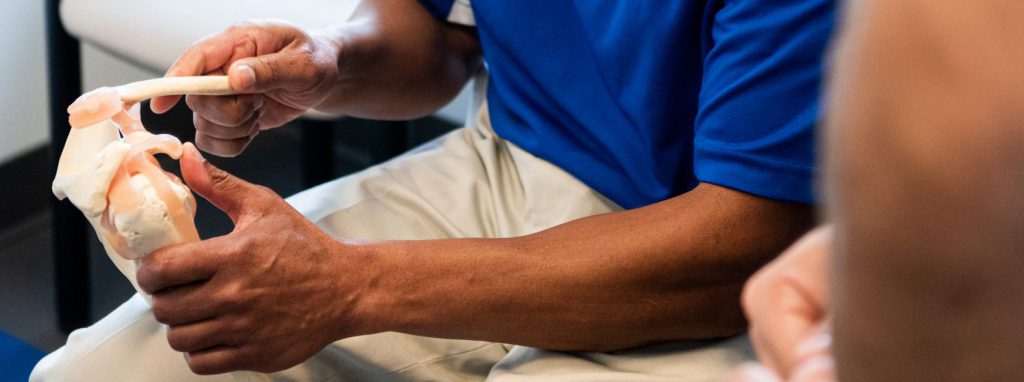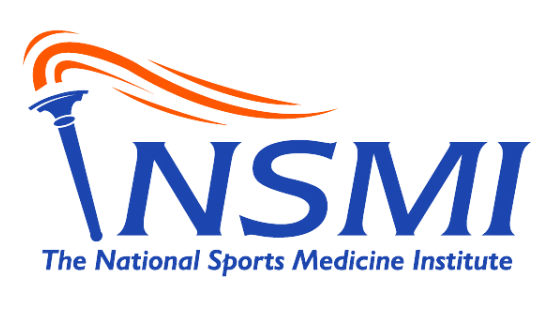Biologic therapies are treatments designed to stimulate or restore the ability of the body’s immune (natural internal defense) system to fight disease. In orthopaedics, biologic therapies are used to enhances the body’s ability to heal injuries including broken bones, and injured muscle, tendon, and ligaments. It has the potential to slow down degeneration, reduce pain, improve movement and delay the need for surgery.
Platelet-Rich Plasma (PRP)
Here at NSMI, we utilize Platelet-Rich Plasma (PRP) as a treatment tool for many acute and chronic conditions.
PRP uses the patient’s blood to trigger the body to begin healing the injured area. The body’s natural response to an injury is to release platelets and white blood cells from the blood to begin the healing, although with modern technology, our providers are able to concentrate this process and inject the PRP directly into the injured tissue.

Your doctor will first draw about 10 cc’s of blood from the large vein in your elbow. The blood is then spun in a centrifuge machine for about 10 to 15 minutes to separate the platelets from the remaining blood components.
The injured part of your body is then anesthetized with a local anesthetic. The platelet-rich portion of your blood is then injected into your affected area. In some cases, your doctor may use ultrasound guidance for proper needle placement.
It is normal to feel some discomfort at the injection site for a few days after your procedure.
You may use cold compresses to alleviate your symptoms.
You will be instructed to stop any anti-inflammatory medications.
You may resume your normal activities but should avoid any strenuous activities such as heavy lifting or exercises.
Your provider will provide you with more detailed instruction for your return to recreational and athletic activity based on your specific condition.
- Increased pain at the injection site
- Infection
- Damage to adjacent nerves or tissues
- Formation of scar tissue
- Calcification at the injection site
Viscosupplementation (Hyaluronates)
Hyaluronic acid is a naturally occurring substance found in the synovial fluid surrounding joints. It acts as a lubricant to enable bones to move smoothly over each other and as a shock absorber for joint loads. People with osteoarthritis have a lower-than-normal concentration of hyaluronic acid in their joints. The theory is that adding hyaluronic acid to the arthritic joint will facilitate movement and reduce pain.
Hyaluronate injections are usually performed after other non-surgical treatments for osteoarthritis such as medications, physical therapy and steroid injections have failed.

- Knee pain that interferes with activities of daily living
- Swelling inside the knee joint
- Stiffness in the knee that last greater than 30 minutes
- Radiographic (X-ray or MRI) signs of mild to moderate osteoarthritis of the knee joints
- Failure to improve after attempting other non-surgical treatments for osteoarthritis such as medications, physical therapy and steroid injections
In general:
- Your provider will clean the area where you’ll have your injection using an alcohol or iodine swab
- Your provider will use an anesthetic spray around the site of injection to decrease pain from the injection
- In some cases, your provider might use ultrasound imaging so that they can inject into exactly the right spot
- If you have excess fluid in your joint, your provider might remove a small amount of fluid before beginning
- Your provider will inject the hyaluronic acid into the joint space using a needle attached to a syringe
- A small bandage will be applied to your injection site
Patients should be able to go home shortly after the procedure.
For about 48-72 hours, patients should avoid standing for long periods, excessive walking, jogging, or lifting heavy weights.
Some people have a slight pain, warmth, and swelling right after their procedure. These symptoms usually don’t last long. Using an ice pack may help.
Patient should contact their provider right away if these symptoms don’t go away soon, or if they have severe warmth, redness, pain, or high fever.
Make sure to keep all of your future appointments. The procedure may not work effectively if the patients’ do not receive the full series of injections.
Patients should not expect the hyaluronic acid injection to relieve symptoms immediately. It may take several weeks before them begin to notice a difference. Relief from symptoms may last for several months.
If viscosupplementation is effective, the patient may be able to repeat the injection (or series of injections) in 6 months to a year depending on their insurance.
Most people don’t have any problems from viscosupplementation, but a small percentage of people do have problems.
The most common problem you might encounter is a flare-up of joint inflammation just after the injection. This might cause additional pain and swelling in the short term. Healthcare providers are still learning about the best techniques to help reduce the chances of this complication.
Less common risks include:
- Bleeding
- Allergic reaction
- Pain at the injection site
- Infection (Patient should delay the injection if they have any active infection)
Other Injections
Cortisone
Cortisone shots are injections that can help relieve pain and inflammation in a specific area of your body. They’re most commonly injected into joints — such as your ankle, elbow, hip, knee, shoulder, spine or wrist. Even the small joints in your hands or feet might benefit from cortisone shots. Here at NSMI we do not perform injections into the spine. That procedure can be performed by an Orthopaedic Spine or Pain Management Specialist.
The injections usually contain a corticosteroid medication and a local anesthetic. Because of potential side effects, the number of shots you can get in a year generally is limited.

- Bursitis
- Gout
- Osteoarthritis
- Psoriatic arthritis
- Reactive arthritis
- Rheumatoid arthritis
- Tendinitis
- Your provider may ask you to change into a gown or shorts depending on the location of the injection. You'll then be positioned so that your provider can easily insert the needle.
- The area around the injection site is cleaned using alcohol or iodine swabs.
- Your provider will also apply an anesthetic spray to numb the area where the needle will be inserted. In some cases, your provider might use ultrasound to watch the needle's progress inside your body — so as to place it in the right spot.
- You'll likely feel some pressure when the needle is inserted. Let your provider know if you are experiencing a lot of discomfort.
- The medication is then released into the injection site.
Some people have redness and a feeling of warmth of the chest and face after a cortisone shot. If you have diabetes, a cortisone shot might temporarily increase your blood sugar levels.
After your cortisone shot, your provider might ask that you:
- Protect the injection area for a day or two. For instance, if you received a cortisone shot in your shoulder, avoid heavy lifting. If you received a cortisone shot in your knee, stay off your feet when you can.
- Apply ice to the injection site as needed to relieve pain. Don't use heating pads.
- Not use a bathtub, hot tub or whirlpool for two days. It's OK to shower.
- Watch for signs of infection, including increasing pain, redness and swelling that last more than 48 hours.
- Cartilage damage
- Death of nearby bone
- Joint infection
- Nerve damage
- Temporary facial flushing
- Temporary flare of pain and inflammation in the joint
- Temporary increase in blood sugar
- Tendon weakening or rupture
- Thinning of nearby bone (osteoporosis)
- Thinning of skin and soft tissue around the injection site
- Whitening or lightening of the skin around the injection site
Limits on the number of cortisone shots
There's concern that repeated cortisone shots might damage the cartilage within a joint. So providers typically limit the number of cortisone shots into a joint.
In general, you shouldn't get cortisone injections more often than every six weeks and usually not more than three or four times a year.

